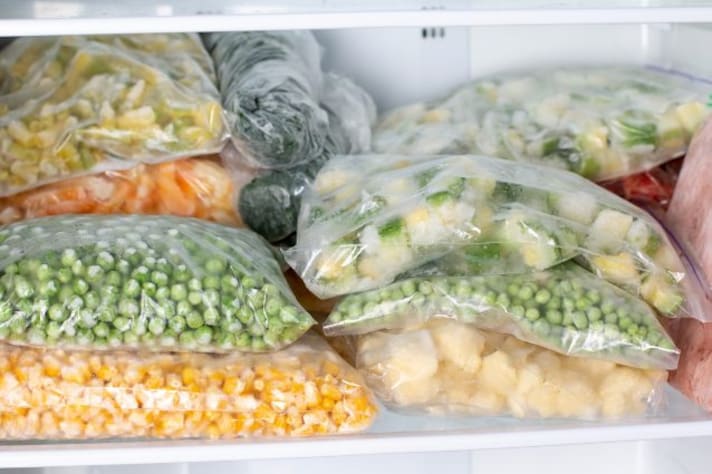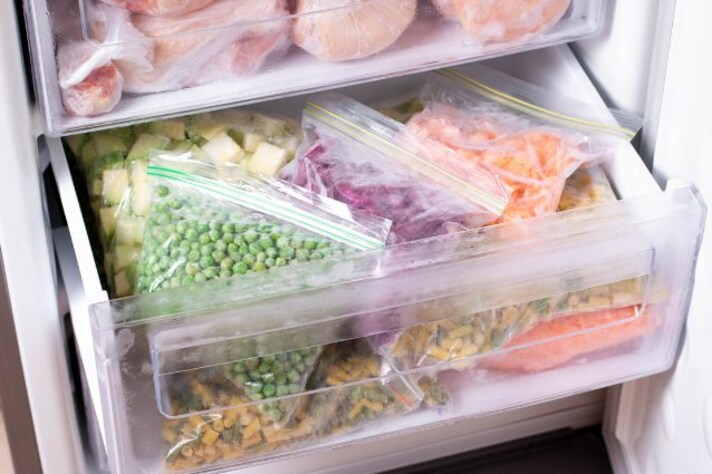You Should Start Buying Frozen Produce Instead of Fresh One, Right Now: This Is Why
With rising grocery prices and looming tariffs, it’s time to rethink the freezer aisle. Here's why frozen produce is your best bet in 2025.

If you’ve ever side-eyed a bag of frozen peas while reaching for the glossy bin of fresh sugar snaps, you’re not alone. But in 2025, it's time for a mental thaw. With grocery prices steadily climbing—thanks to inflation and economic policies—frozen produce is becoming the unsung hero of the American kitchen.
The USDA projects a 3.3% hike in food-at-home prices this year, meaning your usual grocery haul is going to cost a bit more—unless you get strategic. Enter: frozen fruits and vegetables. They’re not just cheaper; they also last longer and waste less. In fact, that $4 head of lettuce you forgot in the crisper drawer last week? That’s money straight in the trash.
A Price Storm in Your Shopping Cart
Tariffs are back with a vengeance, and they’re messing with more than just your international news feed. In 2025, the U.S. slapped a new 10% baseline tariff on a wide range of imported goods, with targeted tariffs shooting as high as 145%—especially on imports from China, a major supplier of produce, seafood, and pantry staples.
Translation? That “fresh” garlic flown in from overseas is now significantly more expensive, and so is that imported asparagus you were saving for Sunday’s brunch. These tariffs, meant to encourage domestic production, are squeezing your grocery bill in the meantime. And while fresh produce suffers the most from price surges, frozen varieties—often sourced and processed domestically—are holding steady in price.

The Cold Truth About Nutrition
Still think frozen veggies are the sad, soggy cousins of fresh produce? Think again. Multiple studies have shown that frozen fruits and vegetables can retain nutrients just as well—if not better—than their fresh-picked peers. Why? Because they’re flash-frozen at peak ripeness, locking in vitamins and flavor in a way that fresh produce, which often travels days (if not weeks) to store shelves, just can’t compete with.
So while you might miss the crunch of a just-cut carrot, what you gain in convenience, shelf life, and nutrient retention makes the frozen version a worthwhile trade-off. Plus, frozen blueberries in a smoothie? Chef’s kiss.
Waste Not, Want Not
Americans throw away over 30% of the food they buy, and fresh produce is a huge chunk of that iceberg. According to the UN’s 2024 report, global food waste surpassed one billion tons in 2022. That’s not just a tragedy for your wallet—it’s a blow to the environment. Every tossed apple and wilted spinach leaf adds to greenhouse gas emissions.
Frozen food cuts down on waste because it's portioned, preserved, and patient. You use what you need, when you need it, and the rest stays perfectly preserved in your freezer. And with the rising popularity of “zero-waste kitchens” and sustainable living, frozen produce is becoming the climate-conscious consumer's quiet MVP.
Freezer Is the New Farmer's Market (Well, Almost)
Let’s be real: Nothing beats biting into a perfectly ripe summer tomato. But when your local market’s strawberries are $6 a pint (and moldy by day three), the freezer section starts to look a lot more like a lifeline than a last resort.

Today’s frozen food isn’t your grandma’s icy mystery bags. Brands are offering flash-frozen organic spinach, diced avocado, stir-fry mixes, even pre-seasoned veggie medleys that cook straight from frozen. And because these items don’t rely on fickle growing seasons or global shipping delays, they offer consistent quality and availability year-round.
Save Time and Money
With hectic workdays and rising costs, meal prep needs to be smart—not fancy. Frozen produce makes this easier. No chopping, peeling, or babysitting required. Whether it’s tossing frozen cauliflower into an air fryer or simmering a bag of stir-fry veggies in your favorite sauce, frozen foods cut down on prep and cleanup—making them ideal for busy households.
What’s more, many frozen items are pre-portioned, which helps prevent overbuying and unnecessary waste. Fewer last-minute runs to the store = more dollars in your wallet.
;Resize,width=767;)
;Resize,width=712;)

;Resize,width=712;)
